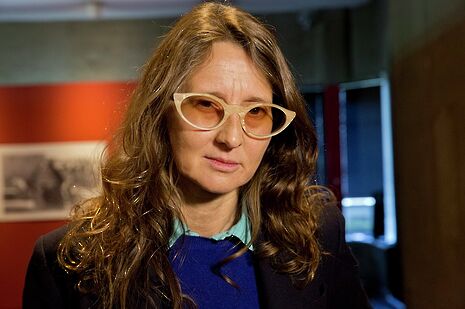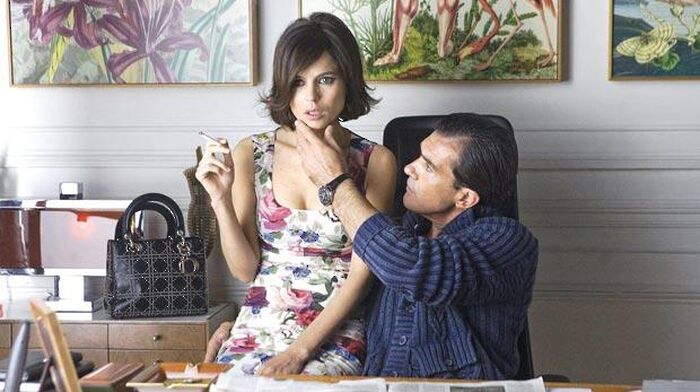Zama, Lucrecia Martel and the space between
The latest offering from the Argentinian auteur is part of an oeuvre marked by space and silence

Lucrecia Martel is a filmmaker of absence. This is not to say that her films are empty, nor to say that they are silent. In calling Lucrecia Martel a filmmaker of absence, one is only pointing out her predilection for the open – the open space of virgin land, the open space of a half-finished conversation, the open space of a backdrop lingering behind a figure half-out-of-shot.
If you google images of the elusive Argentinian auteur, you are sure to find photos of her puffing away on a fat cigar in her signature cat-eye glasses. This, too, like smoking in general in her films, is perhaps an extension of this interest in emptiness – a punctuative gesture of absence. And yet these pauses and absences are not void of intent, or indeed truly absent at all. There is always a thought lingering behind the conversational pause, an animal being hunted in the backdrop of the “empty shot,” the shadow of mortality creeping in at the edges of the frame. Lucrecia Martel is not a morose filmmaker, and yet her films are invariably concerned with the attempt to beat back death, or rather to delay its arrival a few days longer, so that one might lie in the sun a little longer before the tide comes in.
Perhaps not since Andrei Rublev have the boundaries between the epic and the lyrical been so artfully blurred in narrative cinema
Lucrecia Martel began a residency in Cambridge on the 5th of May. She stayed two weeks, during which we were treated to a complete retrospective of her films at the Arts Picturehouse, and a seminar at the Centre for Film and Screen. An unfortunate clash with the exam period meant that I was not able to attend as many events as I would have liked, but the moments of Martelian malaise snatched out of Exam Term haze were all the sweeter for their unlikelihood. Having already watched Martel’s 2001 debut La cienaga (The Swamp), I set my sights on a screening and Q&A of her sophomore feature, 2004’s La niña santa (The Holy Girl).
The film itself is a domesticated sibling of La cienaga, whose wild swampiness of bourgeois chaos is tamed by the supposedly safe haven of a hotel. Martel’s distinctive “eight-year-old child” low visual point of view remains consistent, as does her persistent exploration of the mysticism of childhood. But there is a tension present which was not so potent in La cienaga – the boundaries instated by the hotel walls drive Martel to further explore the power of the open space, with many scenes taking place in the hotel swimming pool and out on the motorway just outside the city.
14 years later (and around two weeks after my initial Martel encounter and around one after her departure), Martel’s fourth feature, Zama, premiered in the UK, and I went to see it. After 2008’s La mujer sin cabeza (The Headless Woman) premiered to mixed response at Cannes, interest in Martel’s subsequent projects gradually grew. It turned out that over the long interval between third and fourth outputs, Martel, among numerous other projects, had developed an adaptation of Antonio di Benedetto’s 1956 novel Zama.
The project is unbelievably ambitious, both in artistic scope and production value. Though nothing much happens in terms of narrative (Don Diego de Zama, a Corregidor in nascent colonial Argentina seeks a better assignment from the Spanish government), it manages to sustain with ease a sense of epic grandeur. Perhaps not since Tarkovsky’s 1967 Andrei Rublev have the boundaries between the epic and the lyrical been so artfully blurred in narrative cinema.
The absence, previously present in the form of pause or emptiness, is now used more as canvas than vacuum
Martel is somehow able, without reassigning narrative authority, to afford agency to the native and women characters in the patriarchal, oppressive society the film depicts. Unlike numerous filmmakers before her, she accomplishes this without fireworks and without conflict, but by the careful composition of intricate shots, often with colonialists in the foreground, leaving space between people or furniture through which we catch glimpses of a life pushed to the side-lines. A ridiculously bewigged Spanish aristocrat attempts to seduce Don Diego de Zama, but in the space between their ostentatiously ornate bodies, a black slave can be seen waving a fan against a vivid blue wall. One catches such glimpses through the legs of animals, through distant doorframes, through gaps between sand dunes.
The absence previously present in Martel’s films in the form of pause, of emptiness and of ignorance, is here used more as a canvas than as a vacuum (any one of the stills from Zama could rival a renaissance genre painting in terms of colour and composition). But like her earlier features, Zama is pervaded by the overhanging threat of death and, possibly still worse, that of boredom. Don Diego meanders again and again to the Atlantic shore, looks out, and eventually returns inland to fight again for a better life.
After the screening of La niña santa Martel spoke at length about her mystical experiences growing up in Argentina, about the point at which she ceased to believe in God, and about the possibility of telepathic connection between mothers and children. Although Martel and her filmography might at first glance seem elliptical or even “full of holes,” it’s worth coming closer and taking a good look through the gaps – you never know what she might have hidden on the other side.
 News / Cambridge study finds students learn better with notes than AI13 December 2025
News / Cambridge study finds students learn better with notes than AI13 December 2025 News / Cambridge Vet School gets lifeline year to stay accredited28 November 2025
News / Cambridge Vet School gets lifeline year to stay accredited28 November 2025 Science / Did your ex trip on King’s Parade? The science behind the ‘ick’12 December 2025
Science / Did your ex trip on King’s Parade? The science behind the ‘ick’12 December 2025 News / Uni Scout and Guide Club affirms trans inclusion 12 December 2025
News / Uni Scout and Guide Club affirms trans inclusion 12 December 2025 Arts / Modern Modernist Centenary: T. S. Eliot13 December 2025
Arts / Modern Modernist Centenary: T. S. Eliot13 December 2025








